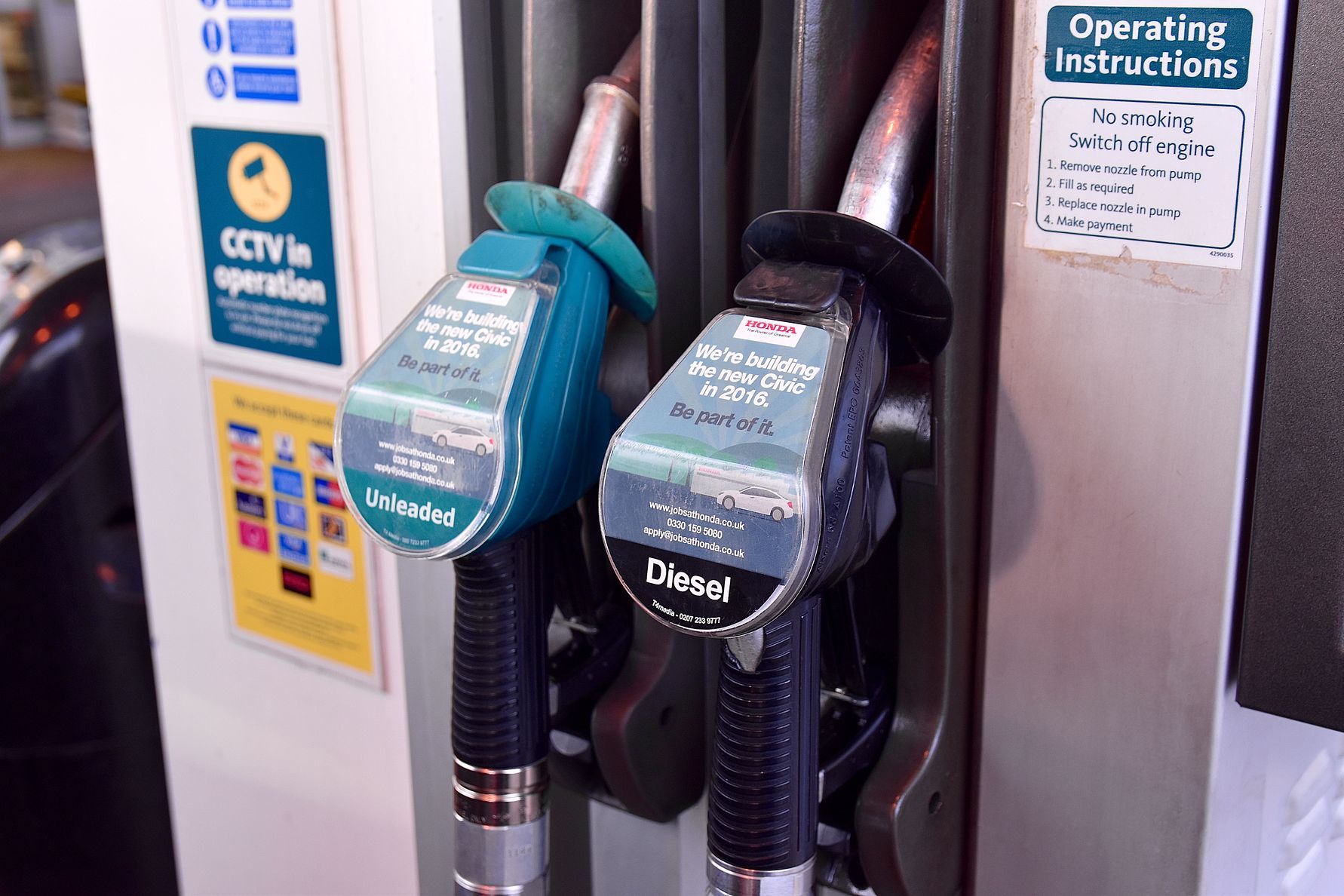October sees biggest petrol price rise at UK forecourts in three and a half years

Unleaded prices now at highest since July 2015
Weak pound and a higher oil price biggest factors contributing to rise
RAC calls for continued fuel duty freeze amid price uncertainty
The price of petrol rose more in October than at any time since February 2013, with diesel rising at the fastest rate since May 2008, data from the RAC’s latest Fuel Watch report shows.*
A combination of a weak pound and Brexit fears since the UK’s EU referendum vote and rising oil prices have contributed to average petrol prices rising by 4.39p per litre from 112.34p on 2 October to 116.73p on 31 October. Diesel was up 5.17p per litre, ending the month at 118.65p on average, having begun the month at 113.48p. The average price of both fuels at the forecourt are now at their highest levels since July 2015 – 116.73p per litre for petrol and 118.65p for diesel.
But there are indications that pump prices might stabilise or even reduce slightly in November, as the cost of oil started to fall back in the last days of October. A barrel of Brent crude averaged just under $50 through the month but ended October at a one-month low of $46.63, down from its peak of $51.63 on Wednesday 19 October. Wholesale prices have also responded by dropping sharply at the very end of the month, down by almost 1p and 2p a litre for petrol and diesel respectively.
It now costs £64.20 to fill an average-sized 55-litre petrol family car, with a similar diesel car costing £65.25 per tank to fill. For a light commercial diesel vehicle with an 80-litre tank, it now costs £94.92 to fill from empty.
RAC fuel spokesman Simon Williams said: “October 2016 was an historic month for UK pump prices but – sadly for motorists – for all the wrong reasons. The effects of the weak pound have really been felt on the wholesale market, and this, combined with an oil price at nearly double its lowest level in 2016, has put significant upward pressure on wholesale fuel prices. Retailers have had no choice but to reflect these dramatic increases in the prices they charge at the pumps.
“Certainly, we are a long way from the remarkably low fuel prices enjoyed by families and businesses early in 2016, when the average price of unleaded was around 102p per litre and diesel was 101p. But while the pound remains in the doldrums, and with few expecting it to recover in the near future, there are some indications that November might not shape up so badly.
“The biggest variable affecting what drivers pay when they fill up is the oil price. OPEC, which represents some of the world’s biggest oil producers, recently agreed in principle a cut in production. This would mark a move away from the over-production strategy that they have employed for so long, and mere talk of a cut has been enough to force oil prices higher. But a final deal is still to be agreed at an OPEC meeting at the end of this month and, with some analysts suggesting a deal might yet stall, this leaves open the prospect oil prices might stabilise or even fall before the end of the year.
“Certainly, if the Chancellor has been considering tinkering with fuel duty in this month’s Autumn Statement, the sheer volatility of prices we are currently seeing should, we hope, be enough to make him reconsider.”
Regional fuel price variation
The South East of England remains the most expensive place to buy petrol in the UK, with the average price standing at 117.18p per litre, while the East Anglia remains the most expensive region for diesel with the average litre on sale for 119.13p.
Northern Ireland still sells the UK’s cheapest fuel, with the average price of unleaded at 115.45p per litre and diesel at 117.25p. However, Northern Ireland saw the sharpest rise in the price of unleaded in October (up 5.16p). Scotland saw the largest increase in the price of diesel, up 5.71p.
Regional average unleaded pump prices
Petrol - pence per litre
02/10/2016
31/10/2016
Change
Northern Ireland
110.29
115.45
+5.16
Scotland
111.51
116.41
+4.90
Yorkshire And Humber
111.47
116.20
+4.73
Wales
111.65
116.29
+4.64
North
111.94
116.45
+4.51
East Midlands
112.22
116.68
+4.46
East Anglia
112.71
117.15
+4.44
South West
112.29
116.71
+4.42
South East
112.88
117.18
+4.30
West Midlands
112.69
116.88
+4.19
North West
112.37
116.48
+4.11
Regional average diesel pump prices
Diesel - pence per litre
02/10/2016
31/10/2016
Change
Scotland
113.11
118.82
+5.71
Wales
112.94
118.38
+5.44
Northern Ireland
111.82
117.25
+5.43
North
112.98
118.29
+5.31
Yorkshire And Humber
112.99
118.20
+5.21
East Midlands
113.39
118.56
+5.17
West Midlands
113.63
118.75
+5.12
South West
113.71
118.82
+5.11
South East
114.03
119.10
+5.07
North West
113.16
118.16
+5.00
East Anglia
114.26
119.13
+4.87


